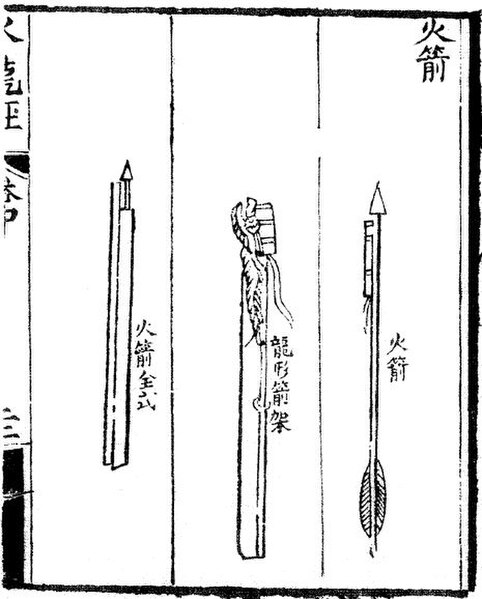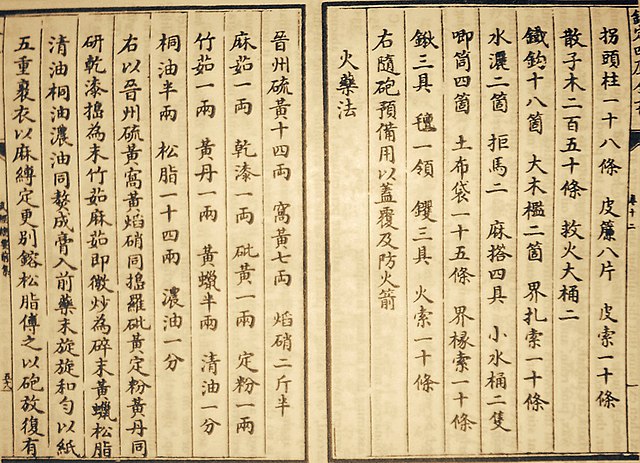Fire arrows were one of the earliest forms of weaponized gunpowder, being used from the 9th century onward. Not to be confused with earlier incendiary arrow projectiles, the fire arrow was a gunpowder weapon which receives its name from the translated Chinese term huǒjiàn (火箭), which literally means fire arrow. In China a 'fire arrow' referred to a gunpowder projectile consisting of a bag of incendiary gunpowder attached to the shaft of an arrow. Fire arrows are the predecessors of fire lances, the first firearm.
An arrow strapped with gunpowder ready to be shot from a bow. From the Huolongjing
Depiction of rocket arrows, from the Huolongjing. The right arrow reads 'fire arrow', the middle is an 'arrow frame in the shape of a dragon' and the left is a 'complete fire arrow'.
Arabic illustration showing a gunpowder arrow on the left, fireworks in the middle, and a midfa (fire lance or hand cannon) on the right, from Rzevuski MS, c. 1320-1350
Two fire arrows (crossbow bolts). Southern Germany, ca. 15th Century, with preserved incendiary mixture of charcoal, sulphur, saltpeter and textile on the shaft.
Gunpowder, also commonly known as black powder to distinguish it from modern smokeless powder, is the earliest known chemical explosive. It consists of a mixture of sulfur, carbon, and potassium nitrate (saltpeter). The sulfur and carbon act as fuels while the saltpeter is an oxidizer. Gunpowder has been widely used as a propellant in firearms, artillery, rocketry, and pyrotechnics, including use as a blasting agent for explosives in quarrying, mining, building pipelines, tunnels, and roads.
Gunpowder for muzzleloading firearms in granulation size
American Civil War re-enactors volley firing with black powder
Flash pan starter dispenser
Earliest known written formula for gunpowder, from the Wujing Zongyao of 1044 AD.








